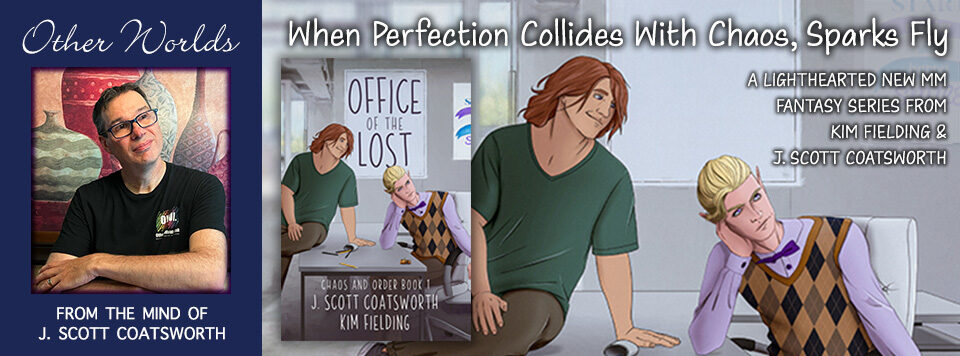
When crafting a story, every writer has to make some key choices:
- What’s the genre?
- What’s the tone?
- How about the setting?
- Who are the characters, and what’s going to happen to them?
- How will they react?
- And will it all end?
But there’s another choice we all make, consciously or unconsciously, that can have a huge impact on the story and how it’s perceived by the reader:
Choosing the person you’ll tell your story in, and the tense.
The vast majority of stories are told in third-person, simple past:
Someone knocked on the door. Zippy the dingo went to open it, but he had no hands, so he waited patiently for it to swing open of its own accord.
Third-person is handy because it lets us swing the camera all around our protagonist(s), showing things that might not be noticed if filtered through a more restrictive person, like second or first. But we’ll come back to that in another column.
Today we’re talking about using first-person:
Someone knocked at the door. I perked up my ears and raced to it, then sat down on my haunches, staring at the knob in despair. I have no hands. Resigned, I waited on my dingo paws and butt for whoever was on the other side to open it.
First-person is much more restrictive than third-person, in that you can only convey things the character sees/feels etc themselves. But it’s also more intimate, letting us slip past that wall that separates reader and character. The reader gets to be the character for a bit, to experience the world as they do.
And while third-person lends itself well to multiple POV character casts, first-person is generally best for single POV tales, although that’s not a hard and fast rule. If you plan to write multiple first-person POVs in a single story, it’s important to set up a clear structure (like alternating chapters between POVs) and to develop a distinct voice for each different first-person POV character in your story.
You also need to be careful with how far you stretch the character’s perception. For folks who normally write in third-person, it’s distressingly easy to slip in details that the character couldn’t possibly perceive or know.
It gets better with practice, and writing a first-person narrative can also be a much more intimate experience for the writer.
Most first-person tales are told in simple past tense, like most third-person stories. But you can up the immediacy of your story by putting it in the present tense too, so that all the action is not only happening to the reader in the first-person driver’s seat, but it’s also happening now.
Someone’s knocking at the door. I perk up my ears and race to it, then sit down on my haunches, staring at the knob in despair. I have no hands. Resigned, I wait on my dingo paws and butt for whoever is on the other side to open it.
My best analogy for this is a movie I saw half a lifetime ago in a crowded theater. I don’t remember the name anymore. But I do remember sitting in the front row because all the other seats were taken. And I vividly recall being right there as a car barreled across an empty field, right into my lap. It was a thrill ride, a rush I’d never get from the top row.
For the story I’m working on now, first person seemed an ideal fit. It’s about assuming another identity, and putting the reader right there in the character’s head, as things suddenly go wrong, felt perfect. I initially wrote it in first person simple past, but when I decided to snip out bits of time as the character fades in and out of awareness, present tense seemed to work even better to convey the immediacy of the disorientation he feels.
Never written a first-person or present tense narrative? Try it and see if you like it for one of your stories. It can be fun to convert a third-person story to first-person and see how it shifts the whole feel of the work.
In general, I tend to favor first person more for short stories than for novellas, but that’s just my personal taste. I’ve seen both done well.
What about using other tenses besides present and simple past? I’ve never seen a story written in simple future, future perfect, or past perfect. They’d sound really weird to me, but who knows? Maybe there’s an author and a story out there that could make them into something amazing.
For now, I’m sticking with first-person, present tense. Until I will have changed my mind. 😉
For my writer friends – do you use first person often? Which tense, and why?
